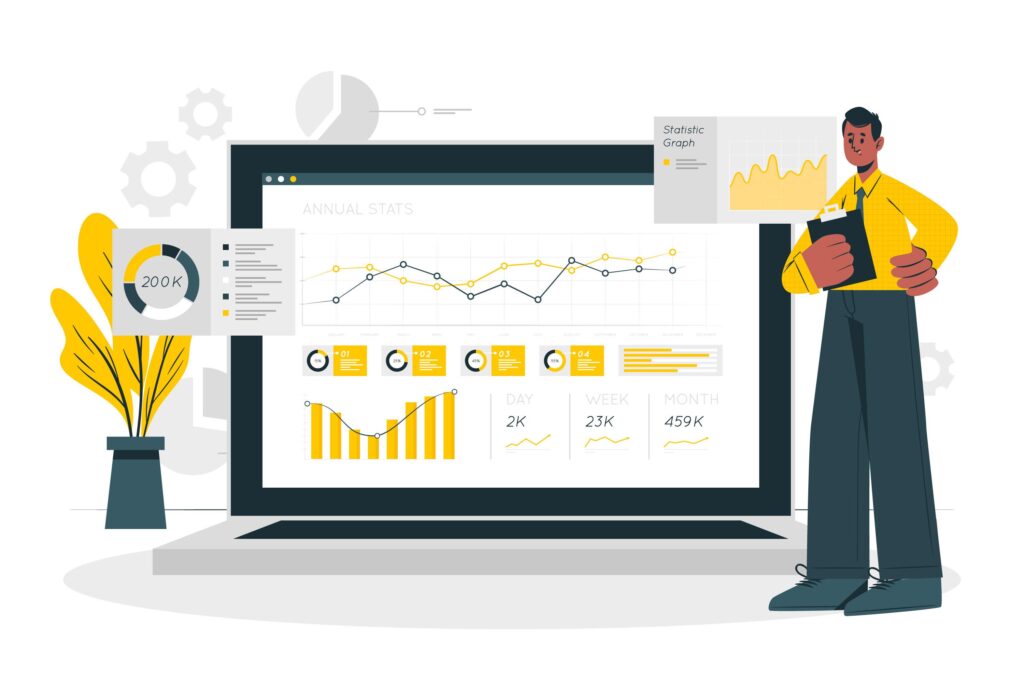Predictive Analytics stands as a pivotal force, shaping industries and revolutionizing decision-making processes. It’s not just a buzzword but a powerful tool that empowers businesses and organizations to forecast future events, identify trends, and make informed decisions. In this comprehensive guide, we’ll delve into the history of Predictive Analytics, what it entails, the different types it encompasses, and the manifold benefits it brings to the table.
Predictive Analytics: A Brief History
Predictive analytics may seem like a modern innovation, but its roots can be traced back to the mid-20th century when statisticians and mathematicians first began developing models to predict future outcomes. In the early years, these models were relatively simplistic, relying on manual calculations and limited data.
The true turning point came with the advent of computers and the availability of vast datasets. The 1980s witnessed the emergence of more sophisticated predictive models, driven by advancements in technology and computational capabilities. This marked the beginning of a new era in Predictive Analytics, where predictive power expanded exponentially.
Understanding “What is Predictive Analytics?“
At its core, Predictive Analytics is the art and science of leveraging historical data, statistical algorithms, and machine learning techniques to forecast future events or trends with a high degree of accuracy. It involves extracting patterns, relationships, and insights from large datasets to make informed predictions.
One of the distinguishing features of Predictive Analytics is its reliance on data-driven decision-making. It operates on the premise that past behaviors and trends are indicative of future outcomes, allowing businesses to proactively respond to changing circumstances. Whether it’s predicting customer behavior, stock market trends, or equipment failures, Predictive Analytics has a wide range of applications across various domains.
Exploring the Types of Predictive Data Analytics
Predictive Analytics is a versatile tool that can be tailored to address a wide range of objectives and challenges. It’s like having a Swiss army knife for your data needs, capable of performing various tasks with precision and efficiency.
Classification Models
Classification models excel at categorizing data into predefined groups. These models are indispensable for tasks such as detecting spam emails, segmenting customers based on purchasing behavior, and even diagnosing diseases from medical records. By sorting data into relevant categories, businesses can make targeted decisions, improving overall efficiency and effectiveness.
Regression Analysis
Regression analysis is a powerful predictive tool used to forecast numerical outcomes. This method is ideal for predicting future sales, setting optimal pricing strategies, and estimating market demand. By analyzing relationships between variables, regression models help businesses make data-driven decisions that enhance profitability and strategic planning.
Time Series Analysis
Time series analysis focuses on examining data points collected or recorded at specific time intervals. This approach is essential for forecasting stock prices, predicting weather patterns, and managing inventory levels. By identifying trends and seasonal variations, time series models provide valuable insights that support strategic planning and operational efficiency.
Clustering Models
Clustering models group similar data points together, making them useful for market segmentation, customer profiling, and anomaly detection. These models help businesses identify distinct customer segments, uncover hidden patterns in data, and detect outliers that may indicate fraudulent activity or operational issues, thus enhancing market strategies and security measures.
Machine Learning Predictions
Machine learning models, including deep learning, neural networks, and decision trees, are increasingly popular due to their ability to handle complex and unstructured data. These models enable advanced applications like image recognition, natural language processing, and predictive maintenance. By learning from vast datasets, machine learning models provide accurate and scalable predictive insights.
Text Analytics
Text analytics involves extracting meaningful insights from textual data. Techniques such as sentiment analysis are employed to gauge customer opinions from reviews or social media comments. By analyzing text data, businesses can understand customer sentiments, improve products and services, and tailor marketing strategies to better meet customer needs.
The Wide-ranging Benefits of Predictive Analytics Tools
The adoption of Predictive Analytics offers a plethora of benefits to organizations and businesses, transforming data into actionable insights with its effective tools.
Enhanced Decision-Making
Predictive Analytics equips decision-makers with valuable insights, helping them make more informed and data-driven choices. By leveraging predictive models, businesses can anticipate market trends, customer needs, and potential risks, leading to strategic advantages and better outcomes.
Cost Reduction
Businesses can significantly reduce operational costs by using predictive analytics to forecast equipment failures and maintenance needs. This proactive approach minimizes downtime, extends equipment life, and optimizes maintenance schedules, resulting in substantial cost savings and improved operational efficiency.
Improved Customer Engagement
Predictive models can identify customer preferences and behaviors, allowing businesses to personalize marketing campaigns and enhance customer experiences. By understanding what customers want, companies can deliver targeted offers, improve customer satisfaction, and build long-lasting relationships.
Risk Mitigation
In the financial sector, Predictive Analytics plays a crucial role in risk assessment and fraud detection. By analyzing transaction patterns and identifying anomalies, businesses can detect fraudulent activities early, mitigate potential losses, and enhance overall security.
Efficient Resource Allocation
Supply chain optimization and inventory management benefit immensely from predictive insights. Businesses can forecast demand, manage inventory levels, and allocate resources more efficiently, reducing waste and ensuring that products are available when and where they are needed.
Increased Competitiveness
Businesses that use Predictive Analytics gain a competitive edge by staying ahead of market trends and customer demands. By leveraging predictive insights, businesses can innovate faster, respond to changes more effectively, and maintain a strong market position.
Revenue Growth
Accurate sales and demand forecasts enable businesses to seize opportunities, optimize pricing strategies, and boost revenue. By predicting market trends and consumer behavior, companies can make informed decisions that drive growth and profitability.
Conclusion: Navigating the World of Predictive Analytics
As we conclude our exploration of Predictive Analytics, it becomes evident that its significance is not confined to a single industry or sector. Instead, it permeates across the business landscape, offering invaluable insights and enabling data-driven decision-making.
The history of Predictive Analytics tells a story of constant evolution and refinement. From its humble beginnings in the mid-20th century to its current state of advanced machine learning models and big data analytics, Predictive Analytics has come a long way, and its journey continues.
In an era where data is hailed as the new currency, understanding and harnessing the power of Predictive Analytics is not just an option; it’s a necessity. It empowers businesses to proactively shape their futures, seize opportunities, and navigate challenges with confidence. By demystifying Predictive Analytics, we pave the way for a future where data-driven insights are accessible and actionable for all.





